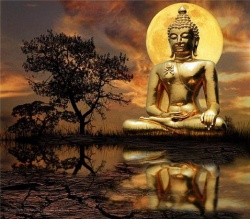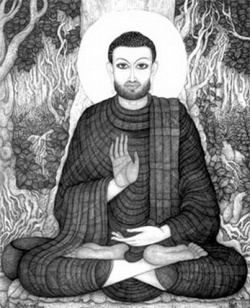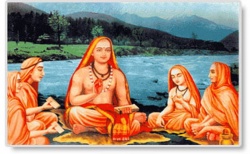The Flight of The Panchen Lama
What was so special about the Shambhala prophecy that made it so attractive for various spiritual and political seekers in the first three decades of the twentieth century—a time of great turmoil on the vast spaces of Eurasia? Shambhala was a prophecy that emerged in the world of Tibetan Buddhism between the tenth and twelth centuries CE, centered on a legend about a pure and happy kingdom located somewhere in the north; the Tibetan word Shambhala means “source of happiness.”
The legend said that the people of this mystical land enjoyed spiritual bliss, security, and prosperity. Having mastered special techniques, they turned themselves into godlike beings and exercised full control over the forces of nature. They were blessed, it was said, with long lives, never argued, and lived in harmony as brothers and sisters. At one point, as the story went, alien intruders would corrupt and undermine the faith of Buddha. That was the time when Rudra Chakrin (Rudra with a Wheel), the last king of Shambhala, would step in and, in a great battle, would crush the forces of evil called mlecca (or people of Mecca). After this, the true faith, Tibetan Buddhism, would prevail and spread all over the world.
The image of Shambhala as the Buddhist paradise and the motif of the final battle between good and evil (ele¬ments missing in original Buddhism), which may have been borrowed from neighboring religious traditions, particularly from Islam, which had violently dislodged Buddhists from northern India in the early Middle Ages.
In order to fully comprehend the geopolitical significance of this legend, it is important to remember that although old Tibet was ruled by the Dalai Lama (“Ocean of Wisdom” in Tibetan), the chief religious leader and administrator, he did not enjoy total power. The Panchen Lama (Great Scholar), abbot of the Tashilumpho monastery, traditionally exercised control over the eastern part of the country. Most important, people believed that one of the Panchens would be reborn as the king of glorious Shambhala. Theologically speaking, the Great Scholar stood even higher than Dalai Lamas.
Tashilunpho abbots were considered the reincarnation of Buddha Amitabha (one of the five top Buddhas, in addition to Gautama), whereas Dalais were only reincarnations of Avalokitesvara, who was only a bodhisattva and the manifestation of Buddha Amitabha. Panchen Lamas, whom many viewed as the spiritual leaders of Tibet, did not pay taxes and even had small armies. In modern times, this privileged status of the Panchen Lamas became a liability, undermining and chipping away at Tibetan unity and sovereignty, to the joy of its close neighbors, some of whom did not miss any chance to pit the Ocean of Wisdom against the Great Scholar. In 1923, when the thirteenth Dalai Lama attempted to curtail the autonomy and tax-exempt status of Tashilumpho, the conflict between the two powerful Tibetan leaders reached its peak; and the Panchen Lama, in fear for his safety, had to escape to Mongolia.
The flight of the Panchen Lama stirred diplomatic and spy games that involved England, Japan, China, and Red Russia. Surprisingly, each, for its own reasons, wanted the Panchen Lama back in Tibet.


